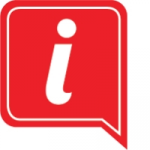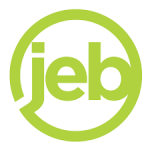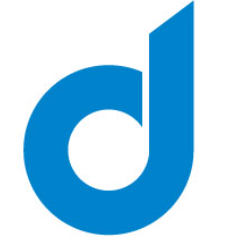As an Outsourced Program Manager (OPM), I manage accounts in a variety of verticals and on all the major affiliate networks, but merchants seem to encounter the same issues when setting up their affiliate program on their own. Whenever we (AM Navigator) get a new client (with an affiliate program) we perform an audit to determine what needs to be fixed in order promote the affiliate program in the proper light and there seems to be the same items most (not all) merchants either neglect or complete partially. This post will cover the top 5 items merchants on the ShareASale affiliate network neglect to include or complete partially when setting up their affiliate program.
#1 – Program Agreement (AKA Terms of Serivce)
This document is probably the most important as it is the “rules” by which affiliates need to follow. Important points to include are:
- PPC (Pay-Per-Click) guidelines – Be specific on what words are off limits and what words can be used.
- FTC policy
- Coupon policy (if applicable)
- Fraud policy
#2 – Emails sent to affiliates during the sign-up process
This is another piece that many merchants do not capitalize on. The 3 emails affiliates receive from ShareASale on the merchant’s behalf are:
- Apply Email – This is sent to an affiliate once they apply to join a merchants affiliate program. This should tell the affiliate that their application is being reviewed and they will be contacted within 24 hours with a decision.
- Decline Email – This is similar to the apply email. It only gets sent to affiliates that merchants reject from their program, but in fairness to the affiliate it should include reasons why they may have been declined and give them an opportunity to contact the program manager and/or re-apply .
- Approval Email – Merchants get this one wrong the most of the three (3). This email should include information about the program (description of the company and main selling points of the affiliate program), PPC guidelines (like outlined in the program agreement), links for them to use immediately (have the code available for them to simply copy and paste), and contact information for the affiliate manager.
#3 – 88×31 Logo
You may be asking yourself, a logo? The 88×31 button banner is important because it is one of the most popiular sizes affiliates use, but it also provides additional exposure when affiliates are looking for merchants to promote. In the merchant search section affiliates view potential matches and a logo is included with many of them and it helps to “convert” the prospect into an affiliate. A simple logo can be the difference.
#4 – Banners
I have seen merchants have over 50 banners available and then I have seen a few that have 5. There is no “magic number” for banners, but having the most popular sizes available is critical. Merchants need to provide sizes that affiliates can use. I have seen obscure sizes and then the most popular sizes are missing and I scratch my head, but here is a link to the most popular banner sizes.
#5 – Newsletters
Last, but certainly not least, newsletters. A good majority of merchants I have done audits for either send newsletters out infrequently or not at all. The latter is most common. How are merchants supposed to communicate with affiliates? The newsletters should be sent out bi-weekly, but at the very least monthly. They should include any news about the program, coupons/deals, links to creatives, and contact information.
I could have gone on forever, but I gave the top 5 items many merchants either neglect or do halfhearted when setting up their affiliate programs. Every aspect of an affiliate program should be completed fully, no matter how relevant a merchant thinks it is. Affiliate managers jobs are to “WOW” affiliates and get them to promote their products/services and having a fully integrated and set up program is the first impression to all.
 This Boston-based award-winning agency is laser-focused on leveraging affiliate marketing to drive sales to the businesses that they work with. Their core service is (i) full affiliate program management, but they also do (ii) affiliate program audits, (iii) affiliate program launches (and re-launches), as well as (iv) affiliate marketing consulting, and (v) training.
This Boston-based award-winning agency is laser-focused on leveraging affiliate marketing to drive sales to the businesses that they work with. Their core service is (i) full affiliate program management, but they also do (ii) affiliate program audits, (iii) affiliate program launches (and re-launches), as well as (iv) affiliate marketing consulting, and (v) training. With offices globally, this large agency provides services in (i) affiliate program management, (ii) publisher development, and (iii) partner marketing program management.
With offices globally, this large agency provides services in (i) affiliate program management, (ii) publisher development, and (iii) partner marketing program management. This Washington DC-based one-man agency provides services in (i) affiliate management, (ii) search engine optimization, and (iii) digital marketing and strategy.
This Washington DC-based one-man agency provides services in (i) affiliate management, (ii) search engine optimization, and (iii) digital marketing and strategy. Headquartered in British Columbia, this agency isn’t only focused on Canada but works in the United States and beyond. They can help with (i) affiliate marketing, (ii) influencer integration, (iii) SEO, (iv) analytics and attribution.
Headquartered in British Columbia, this agency isn’t only focused on Canada but works in the United States and beyond. They can help with (i) affiliate marketing, (ii) influencer integration, (iii) SEO, (iv) analytics and attribution. Formerly known as Greg Hoffman Consulting, rebranded in 2016, this boutique agency offers support with (i) affiliate program management, (ii) public relations, (iii) influencer management, (iv) social media management, and (v) paid digital advertising.
Formerly known as Greg Hoffman Consulting, rebranded in 2016, this boutique agency offers support with (i) affiliate program management, (ii) public relations, (iii) influencer management, (iv) social media management, and (v) paid digital advertising. This one is also what we would call a boutique agency. They work in areas of (i) affiliate marketing program management, (ii) attribution modeling, (iii) influencer program setup and management, and (iv) also provide consulting services in all of the above areas.
This one is also what we would call a boutique agency. They work in areas of (i) affiliate marketing program management, (ii) attribution modeling, (iii) influencer program setup and management, and (iv) also provide consulting services in all of the above areas. This award-winning Denver-based firm has grown far beyond pure affiliate-related services. As of the time of this post, they support merchant promotion through (i) affiliate marketing, (ii) Amazon’s and other marketplaces, (iii) search engine marketing, (iv) digital consulting, (v) email marketing, (vi) organic search, and (vii) social media.
This award-winning Denver-based firm has grown far beyond pure affiliate-related services. As of the time of this post, they support merchant promotion through (i) affiliate marketing, (ii) Amazon’s and other marketplaces, (iii) search engine marketing, (iv) digital consulting, (v) email marketing, (vi) organic search, and (vii) social media. This Florida-based agency believes that “any online business is supported by 3 key strategies: customer acquisition, customer retention, and customer experience.” To aid in the achievement of these three, they support (i) affiliate marketing programs, (ii) email marketing initiatives, and (iii) website optimization efforts.
This Florida-based agency believes that “any online business is supported by 3 key strategies: customer acquisition, customer retention, and customer experience.” To aid in the achievement of these three, they support (i) affiliate marketing programs, (ii) email marketing initiatives, and (iii) website optimization efforts. Hopping to the other coast of the United States, in San Diego we’d find Goodsell — an “affiliate and influencer marketing agency” that can help you launch an affiliate program, managing “the cost to your budget” and monitoring “all affiliate activity.”
Hopping to the other coast of the United States, in San Diego we’d find Goodsell — an “affiliate and influencer marketing agency” that can help you launch an affiliate program, managing “the cost to your budget” and monitoring “all affiliate activity.” Minneapolis-based and almost entirely focused on affiliate marketing, this OPM agency offers (i) affiliate marketing management, (ii) affiliate program audits, and (iii) help with digital strategy and planning.
Minneapolis-based and almost entirely focused on affiliate marketing, this OPM agency offers (i) affiliate marketing management, (ii) affiliate program audits, and (iii) help with digital strategy and planning. Founded by an industry veteran Jamie Birch, and his wife Sarah, this Idaho-based OPM agency positions itself as one helping clients “acquire customers, analyze customer behavior, and optimize their online presence to achieve the best possible results.” They do this through (i) affiliate program management and (ii) conversion rate audits and recommendations.
Founded by an industry veteran Jamie Birch, and his wife Sarah, this Idaho-based OPM agency positions itself as one helping clients “acquire customers, analyze customer behavior, and optimize their online presence to achieve the best possible results.” They do this through (i) affiliate program management and (ii) conversion rate audits and recommendations. While you may not see them on “rankings”, this agency has an absolutely stellar team, including such affiliate marketing legends as Karen and Joel Garcia, Angel Djambazov, and Scott Jangro. Their services include management of (i) affiliate programs (ii) influencer campaigns, (iii) paid search marketing, and (iv) mobile app campaigns.
While you may not see them on “rankings”, this agency has an absolutely stellar team, including such affiliate marketing legends as Karen and Joel Garcia, Angel Djambazov, and Scott Jangro. Their services include management of (i) affiliate programs (ii) influencer campaigns, (iii) paid search marketing, and (iv) mobile app campaigns. Stephanie Robbins started her agency more than a decade ago and has been growing it since then. Her agency’s areas of expertise are (i) micro-influencer activation and, of course, (ii) affiliate management.
Stephanie Robbins started her agency more than a decade ago and has been growing it since then. Her agency’s areas of expertise are (i) micro-influencer activation and, of course, (ii) affiliate management. This Austin-based affiliate marketing agency has been around the block a few times. They offer several levels of affiliate program management service: (i) Enterprise for larger corporations, (ii) Prime Sector for fast-growing businesses, (iii) Emerging for startups.
This Austin-based affiliate marketing agency has been around the block a few times. They offer several levels of affiliate program management service: (i) Enterprise for larger corporations, (ii) Prime Sector for fast-growing businesses, (iii) Emerging for startups. Headquartered in Newcastle upon Tyne (UK) and with offices in Sydney, Amsterdam, and Chicago, this agency focuses solely on affiliate and partnership marketing, embracing partnerships with content publishers and influencers, search marketers, app developers, and more.
Headquartered in Newcastle upon Tyne (UK) and with offices in Sydney, Amsterdam, and Chicago, this agency focuses solely on affiliate and partnership marketing, embracing partnerships with content publishers and influencers, search marketers, app developers, and more. Acquired by Digital Media Solutions in 2020, SmarterChaos is an online performance management agency positioning itself as “an outsourced agent for large branded advertisers, helping to build strong affiliate sales and Cost per Action (CPA) channels”
Acquired by Digital Media Solutions in 2020, SmarterChaos is an online performance management agency positioning itself as “an outsourced agent for large branded advertisers, helping to build strong affiliate sales and Cost per Action (CPA) channels” Founded by Roger Snow, an affiliate marketing old-timer, this is a classic OPM agency that focuses on all things affiliate program management. Whether you have a brand-new affiliate program or a stale one, give them a call.
Founded by Roger Snow, an affiliate marketing old-timer, this is a classic OPM agency that focuses on all things affiliate program management. Whether you have a brand-new affiliate program or a stale one, give them a call.